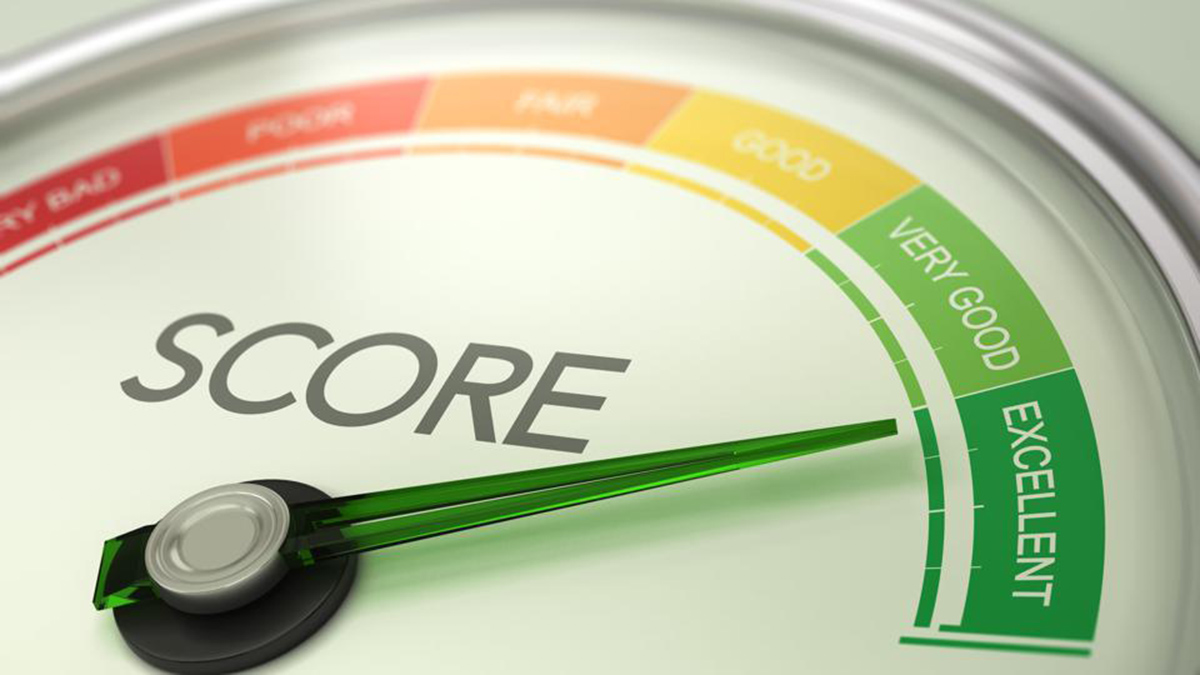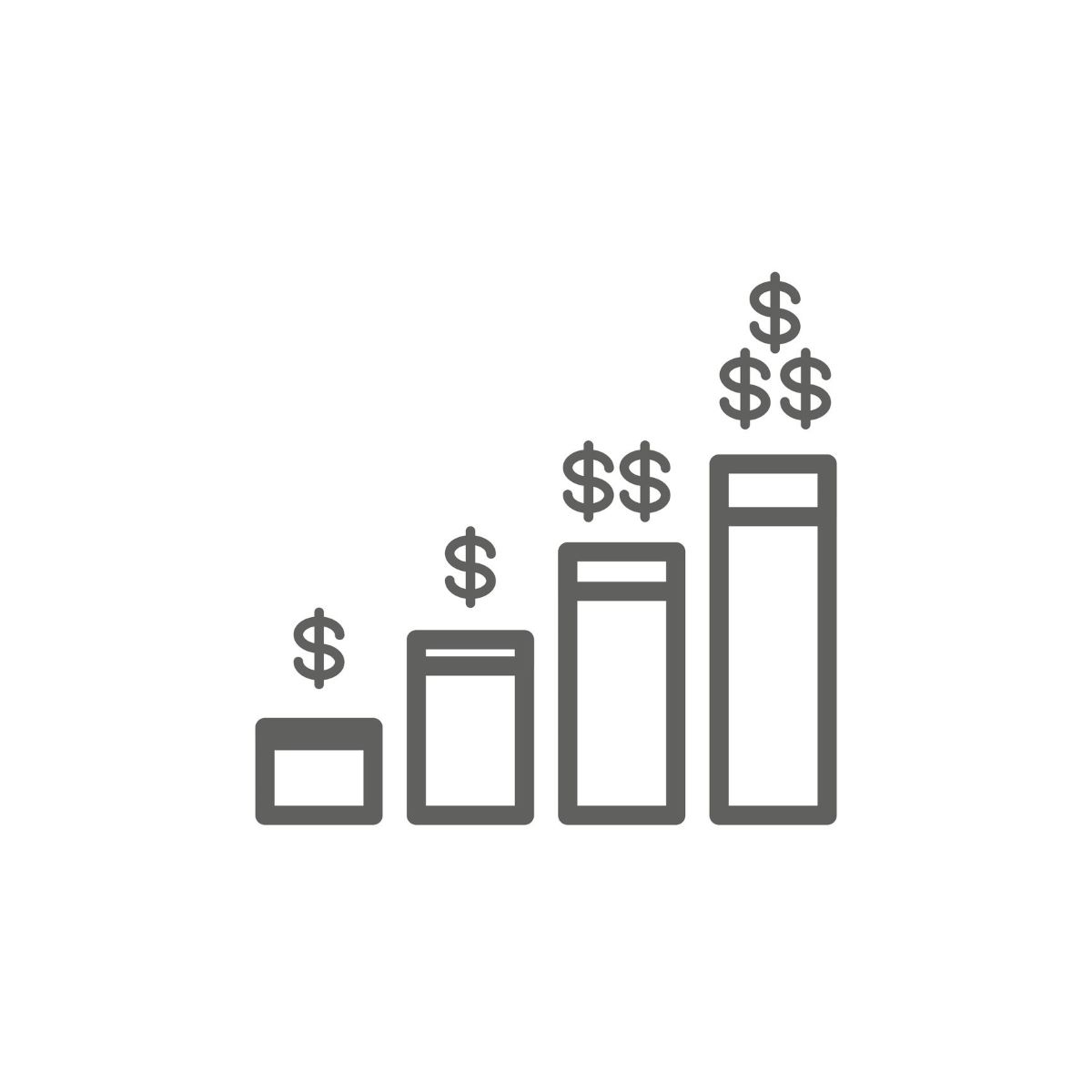Home>Finance>What Does It Mean When Your Credit Limit Increases


Finance
What Does It Mean When Your Credit Limit Increases
Modified: January 15, 2024
Discover the significance of a credit limit increase and its implications for your finances. Learn how a higher credit limit can positively impact your financial standing.
(Many of the links in this article redirect to a specific reviewed product. Your purchase of these products through affiliate links helps to generate commission for LiveWell, at no extra cost. Learn more)
Table of Contents
Introduction
Welcome to the world of credit limits! Whether you’re a seasoned credit card user or new to the world of consumer finance, understanding the concept of credit limits is essential. A credit limit refers to the maximum amount of credit that a lender is willing to extend to you. It acts as a cap on how much you can spend on your credit card or access from a line of credit.
When you first open a credit card or borrow funds through a line of credit, you are assigned an initial credit limit based on various factors such as your credit score, income, and financial history. This limit serves as a safeguard for the lender, ensuring that you don’t borrow more than you can realistically repay.
However, what happens when your credit limit increases? Is it a good thing or a cause for concern? In this article, we will delve deeper into the topic, exploring the reasons behind credit limit increases and the potential benefits and risks associated with them.
By the end of this article, you’ll have a clearer understanding of credit limits, how they can change over time, and how you can best utilize an increased credit limit to your advantage. So, buckle up and get ready to navigate the exciting terrain of credit limits and their impact on your finances.
Understanding Credit Limits
Before we delve into the reasons behind credit limit increases, let’s first establish a clear understanding of what credit limits are and how they work. As mentioned earlier, a credit limit is the maximum amount of credit that a lender is willing to extend to you.
When you apply for a credit card or a line of credit, the lender assesses various factors to determine your initial credit limit. These factors typically include your credit score, income, employment history, and existing debt. The lender wants to ensure that you are a responsible borrower and that you have the ability to repay any funds borrowed. Based on their evaluation, they assign you a credit limit that aligns with their perception of your creditworthiness.
It’s important to note that a credit limit is not a suggestion of how much you should spend. Instead, it is a restriction on how much you can charge to your credit card or access from a line of credit. By staying within your credit limit and making timely payments, you demonstrate to the lender that you are managing your credit responsibly. This, in turn, can help you build a positive credit history and potentially increase your credit score.
If you consistently make your payments on time, responsibly manage your credit, and show financial stability, you may be eligible for a credit limit increase. A credit limit increase provides you with a higher borrowing capacity, allowing you to make larger purchases or have more access to funds when needed. However, it’s important to understand that a credit limit increase is not guaranteed and is at the discretion of the lender.
Now that we have a solid understanding of what credit limits are and how they function, let’s explore the various reasons why credit limits may increase.
Reasons for Credit Limit Increases
There are several reasons why a credit card issuer or lender may choose to increase your credit limit. Here are some common factors that may contribute to a credit limit increase:
- Positive credit history: If you have a track record of making payments on time, maintaining a low credit utilization ratio, and managing your credit responsibly, your lender may reward you with a credit limit increase. This shows them that you are a trustworthy borrower and can handle a higher credit limit.
- Increased income: If you have experienced a significant increase in your income, it may signal to the lender that you have the means to handle a higher credit limit. A higher income can provide assurance that you will be able to make your payments on time.
- Request for an increase: Some credit card issuers allow cardholders to request a credit limit increase. If you have been using your credit responsibly and feel that you need a higher credit limit, you can proactively reach out to your lender and submit a request.
- Financial review: Periodically, credit card issuers conduct financial reviews of their customers. If you have consistently demonstrated responsible credit behavior and your financial situation has improved, this review may prompt the issuer to increase your credit limit.
- Maintaining a long-term relationship: Lenders value long-term relationships with their customers. If you have been a loyal customer with a good payment history, the issuer may increase your credit limit as a way to retain your business.
- Market competition: In some cases, credit card issuers may increase credit limits to remain competitive in the market. This can be seen when lenders try to attract customers by offering higher credit limits than their competitors.
It’s important to keep in mind that not all credit limit increases are automatic or guaranteed. Each lender has its own criteria for determining eligibility, and they may consider multiple factors before making a decision. It’s always a good idea to check with your lender directly to understand their policies and requirements for credit limit increases.
Now that we’ve explored the reasons behind credit limit increases, let’s take a closer look at the potential benefits and risks associated with having an increased credit limit.
Benefits of Credit Limit Increases
A credit limit increase can offer several advantages to cardholders or borrowers. Here are some key benefits to consider:
- Increased purchasing power: One of the primary benefits of a credit limit increase is the ability to make larger purchases. With a higher credit limit, you have more flexibility to buy big-ticket items or cover unexpected expenses without maxing out your card or having to rely on other forms of financing.
- Improved credit utilization ratio: Your credit utilization ratio is the percentage of your available credit that you are currently using. By increasing your credit limit, you effectively lower this ratio. Maintaining a low credit utilization ratio (typically below 30%) is considered a positive indicator of creditworthiness, which can potentially boost your credit score.
- Enhanced emergency fund: An increased credit limit can serve as an additional safety net in case of emergencies. Having access to more credit can provide a cushion to cover unexpected expenses, such as medical bills or car repairs, when your savings may not be sufficient.
- Improved financial flexibility: A higher credit limit allows you to have more flexibility in managing your finances. It gives you the option to spread out your expenses over a longer period, choose payment plans, or take advantage of promotional offers without worrying about exceeding your credit limit.
- Rewards and benefits: Some credit cards offer various rewards and benefits based on your spending. With a higher credit limit, you can potentially earn more rewards points, cash-back, or enjoy additional perks offered by your credit card issuer.
While these benefits can be advantageous, it is important to exercise caution and responsible financial behavior. A higher credit limit should not be seen as an invitation to overspend or accumulate unnecessary debt. It’s essential to use your increased credit limit wisely and ensure that you can comfortably repay any borrowed funds.
Now that we’ve explored the benefits of a credit limit increase, let’s discuss the potential risks that come with having an increased credit limit.
Potential Risks of Credit Limit Increases
While a credit limit increase can provide numerous benefits, it’s important to be aware of the potential risks associated with having an increased credit limit. Here are some potential risks to consider:
- Temptation to overspend: With a higher credit limit, there is a risk of succumbing to temptation and overspending. It’s crucial to exercise self-discipline and only use credit for necessary purchases that you can afford to repay in a timely manner. Overspending can lead to increased debt and financial strain.
- Inability to make payments: If your credit limit is increased but your income or financial situation remains the same, you may struggle to make the higher payments required to repay your debt. Failing to make payments on time can result in penalties, damage to your credit score, and accumulation of interest charges.
- Higher interest charges: Increased credit limits may lead to higher balances on your credit card. If you carry a balance on your card and cannot pay it off in full each month, you will incur interest charges on the unpaid balance. Higher balances can result in significantly higher interest payments, which can be costly in the long run.
- Potential for debt accumulation: A higher credit limit can make it easier for you to accumulate debt if not managed responsibly. It’s important to regularly assess your spending habits and only use credit when necessary. Creating a budget and tracking your expenses can help prevent the accumulation of excessive debt.
- Negative impact on credit score: While an increased credit limit can potentially improve your credit utilization ratio, it can also have a negative impact if used irresponsibly. If you max out your credit card or consistently carry high balances, it can negatively affect your credit score and make it harder to obtain future credit.
To mitigate these risks, it’s vital to maintain responsible credit management practices. Make timely payments, keep your credit utilization ratio low, and be mindful of your spending habits. Regularly reviewing your financial situation and adjusting your budget can also help you stay on track and avoid falling into debt.
Now that we’ve explored the potential risks of a credit limit increase, let’s delve into what causes credit limit increases and how you can use an increased credit limit to your advantage.
What Causes Credit Limit Increases?
Credit limit increases are typically based on a combination of factors that demonstrate your creditworthiness and your ability to handle a higher borrowing capacity. Here are some common reasons that may contribute to a credit limit increase:
- Positive credit history: Your payment history, including making payments on time and maintaining a low credit utilization ratio, is a major factor considered by lenders. Consistently demonstrating responsible credit behavior can increase your chances of receiving a credit limit increase.
- Higher income: A significant increase in your income may prompt credit card issuers or lenders to increase your credit limit. This is because a higher income generally indicates a greater ability to repay any borrowed funds.
- Length of credit history: Lenders often consider the length of your credit history when determining whether to increase your credit limit. The longer you have a positive credit history, the more likely you are to receive a credit limit increase.
- Low credit utilization ratio: A low credit utilization ratio, which is the percentage of your available credit that you’re currently using, is a positive indicator of responsible credit management. Maintaining a low ratio can show lenders that you’re not heavily reliant on credit and may increase your chances of a credit limit increase.
- Requesting an increase: Some credit card issuers allow cardholders to request a credit limit increase. If you believe you’ve displayed responsible credit behavior and have a valid reason for needing a higher credit limit, you can proactively reach out to your credit card issuer to make the request.
- Financial review: Periodically, credit card issuers conduct financial reviews of their customers’ accounts. These reviews assess factors such as your payment history, credit score, and overall financial health. A positive review can result in a credit limit increase.
- Market competition: In certain situations, credit card issuers may increase credit limits to remain competitive in the market. If other lenders are offering customers higher credit limits, your credit card issuer may follow suit to retain your business.
It’s important to note that credit limit increases are not guaranteed and may vary depending on the lender’s policies and your individual circumstances. It’s essential to maintain responsible credit management and regularly check with your credit card issuer or lender to understand their criteria for credit limit increases.
Now that we’ve explored the causes of credit limit increases, let’s move on to understanding how to use an increased credit limit to your advantage.
How to Use an Increased Credit Limit
When you receive an increased credit limit, it’s important to use it responsibly and strategically to maximize its benefits. Here are some tips on how to use an increased credit limit to your advantage:
- Stick to your budget: Just because your credit limit has increased doesn’t mean you should immediately increase your spending. Stick to your budget and only use your credit card for planned expenses that you can comfortably repay.
- Pay off existing debt: If you have existing credit card debt, consider using your increased credit limit to pay it down. By reducing your outstanding balances, you can improve your credit utilization ratio and potentially boost your credit score.
- Plan for emergencies: An increased credit limit can provide a safety net for unexpected expenses. However, it’s important to have an emergency fund in place and rely on credit only as a last resort. Use your increased limit wisely and avoid accumulating unnecessary debt.
- Utilize balance transfers: If you have high-interest debt on other credit cards or loans, you may consider using your increased credit limit to transfer these balances to a card with a lower interest rate. This can help you save on interest charges and pay off your debt more efficiently.
- Maximize rewards: With a higher credit limit, you may have the opportunity to earn more rewards on your credit card. Take advantage of any rewards programs your card offers and ensure that you’re maximizing the benefits and incentives available to you.
- Maintain responsible credit habits: It’s crucial to continue practicing responsible credit management even with an increased credit limit. Make your payments on time, avoid carrying high balances, and monitor your credit utilization ratio. By maintaining good credit habits, you can protect your credit score and financial well-being.
Remember, an increased credit limit is not an invitation to overspend. It’s a tool that can provide financial flexibility and benefits if used wisely. Consider your overall financial goals and use your increased credit limit to support those goals rather than accruing unnecessary debt.
Lastly, don’t forget to regularly monitor your credit activity and review your credit reports to ensure everything is accurate and up-to-date. This way, you can stay in control of your credit and make informed financial decisions.
Now that we’ve explored how to use an increased credit limit to your advantage, let’s move on to discussing the importance of monitoring your credit limit.
Monitoring Your Credit Limit
Monitoring your credit limit is an essential part of maintaining a healthy financial life. Here are some reasons why monitoring your credit limit is important:
- Preventing unauthorized charges: By regularly checking your credit limit, you can quickly spot any unauthorized charges or fraudulent activity on your account. This allows you to take immediate action by notifying your credit card issuer to address the issue and protect your finances.
- Identifying errors or discrepancies: Mistakes can happen, and errors may sometimes occur in your credit limit or credit utilization reporting. By monitoring your credit limit regularly, you can identify and address any discrepancies, ensuring that your credit report accurately reflects your available credit and utilization.
- Managing your credit utilization: Your credit utilization ratio, which is the amount of credit you’re using in relation to your total available credit, is an important factor in determining your credit score. By monitoring your credit limit, you can ensure that you’re staying within a healthy credit utilization range, which can positively impact your creditworthiness.
- Planning your financial strategy: Monitoring your credit limit allows you to plan your financial strategy effectively. By being aware of your available credit, you can make informed decisions about your spending and borrowing, aligning them with your financial goals and avoiding unnecessary debt.
- Tracking changes and potential increases: Regularly monitoring your credit limit enables you to track any changes made by your credit card issuer. This includes not only increases in your credit limit but also any decreases or adjustments that may impact your spending ability or creditworthiness.
- Staying on top of your credit management: Keeping an eye on your credit limit is a proactive approach to staying in control of your credit and financial health. It demonstrates responsible credit management and ensures that you’re aware of any changes that may affect your overall financial well-being.
Make it a habit to review your credit card statements regularly and monitor your credit limit through online banking or mobile apps. Additionally, consider taking advantage of credit monitoring services that provide alerts and notifications for any significant changes to your credit limit or credit utilization.
By actively monitoring your credit limit, you can stay proactive, protect yourself from potential fraud, and maintain a solid understanding of your overall credit picture. It’s an important step in managing your finances and safeguarding your financial future.
Now, let’s wrap up our discussion on credit limits.
Conclusion
Credit limits play a crucial role in managing your finances and utilizing credit responsibly. Understanding how credit limits work and how they can change over time is essential for maintaining a healthy financial life. With this knowledge, you can navigate the world of credit more effectively and make informed decisions about your borrowing and spending habits.
A credit limit increase can offer numerous benefits, including increased purchasing power, improved credit utilization ratio, and enhanced financial flexibility. However, it’s important to be mindful of the potential risks that come with having an increased credit limit, such as the temptation to overspend or accumulate unnecessary debt.
While credit limit increases can offer advantages, it’s crucial to use the additional credit responsibly and strategically. Stick to your budget, pay off existing debt, plan for emergencies, and maintain responsible credit management practices. By doing so, you can make the most of your increased credit limit while protecting your financial well-being.
Remember to regularly monitor your credit limit to prevent unauthorized charges, identify errors or discrepancies, and manage your credit utilization effectively. By staying on top of your credit limits, you can make informed financial decisions and maintain control of your credit and overall financial health.
In conclusion, credit limits are not just arbitrary numbers. They are important tools that can impact your financial life and creditworthiness. By understanding credit limits, using them responsibly, and monitoring them regularly, you can make the most of your credit and maintain a solid foundation for your financial future.














